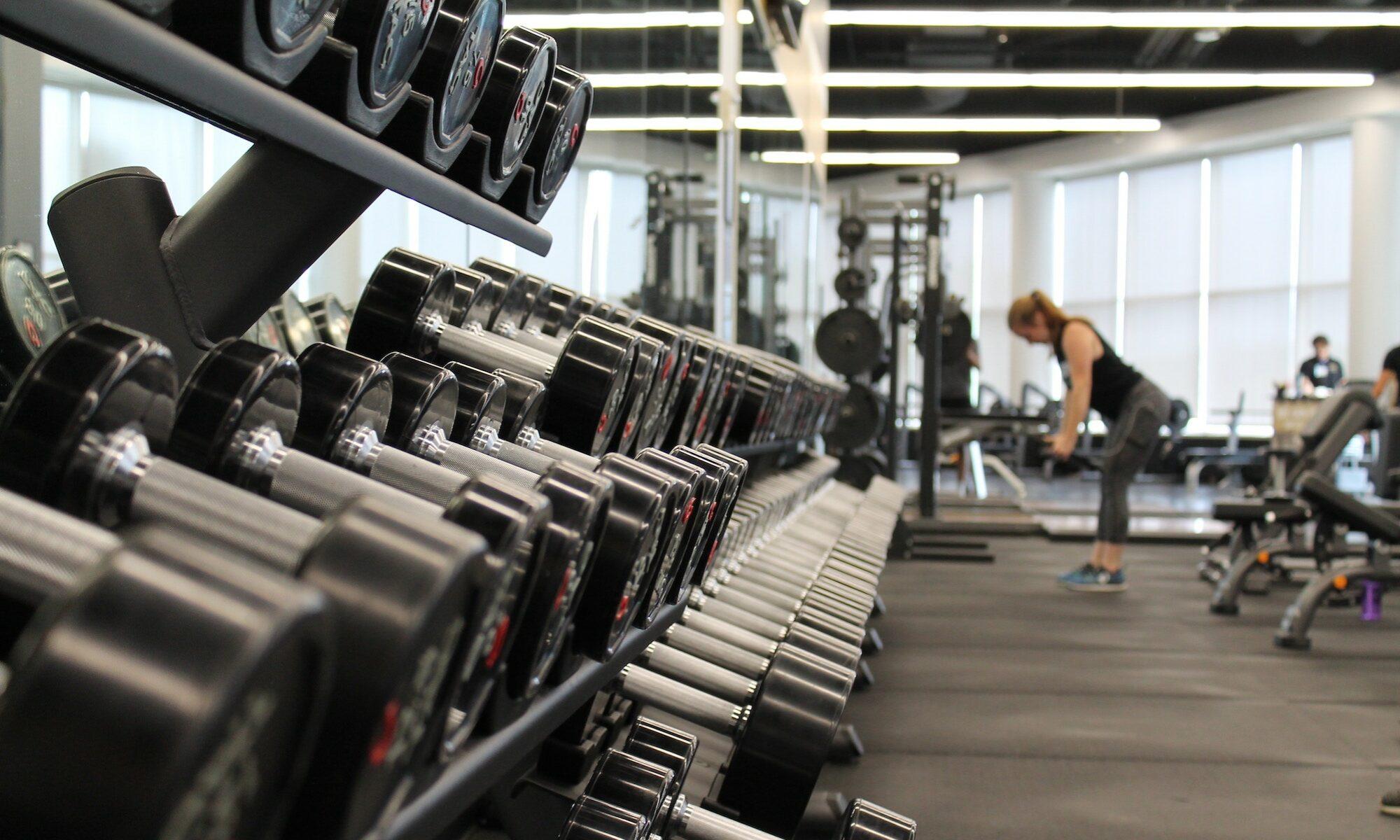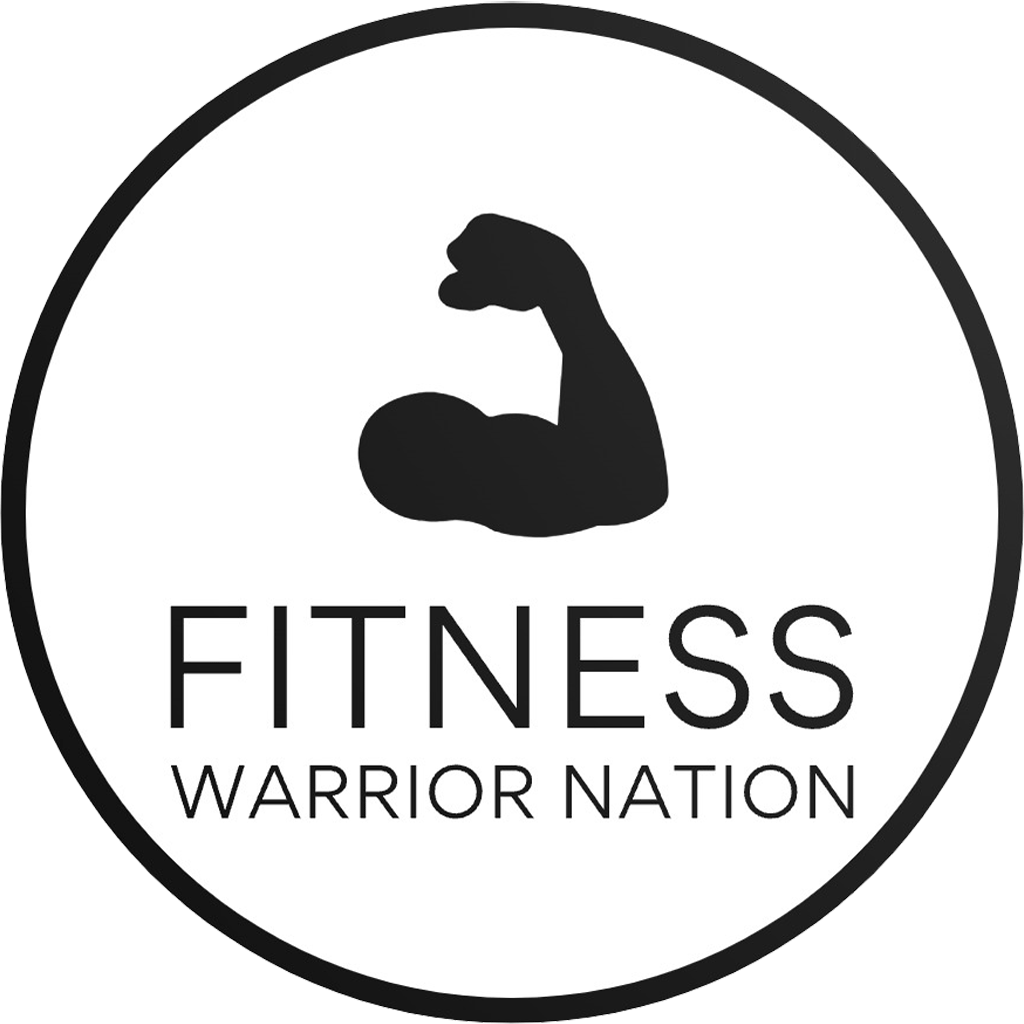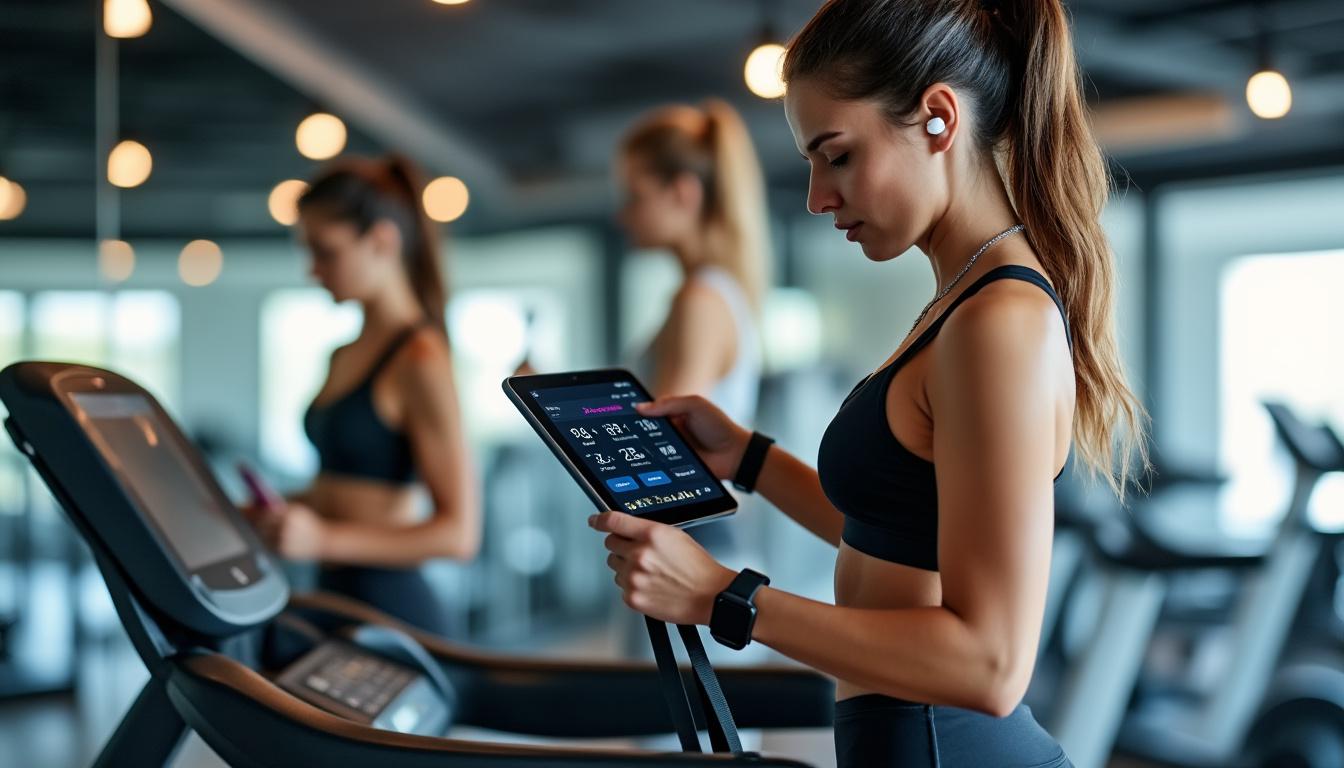In 2025, a well-equipped training routine isn’t just about willpower or a shiny gym; it’s powered by precise data, personalized coaching, and recovery that turns hard workouts into sustainable progress. Fitness Warrior Nation champions a pragmatic approach: choose gadgets that genuinely amplify your results, not just impress with features. Drawing from years of hands-on testing, professional coaching insights, and a relentless drive to help you reach your goals, this guide breaks down the essential fitness tech you’ll actually use day in and day out. Expect concrete examples, actionable advice, and real-world context that you can apply whether you’re chasing PRs, new endurance benchmarks, or simply better consistency. Explore how wearables, recovery devices, and smart home gym systems come together to create a cohesive, data-driven workflow that respects your time, budget, and lifestyle. This isn’t about chasing the latest trend; it’s about building a durable, enjoyable routine with tools that empower you to train smarter, recover faster, and stay motivated through every season.
As you read, you’ll notice a common thread: the best gear doesn’t replace discipline, it elevates it. Expect a practical lens on brands you already recognize—Fitbit, Garmin, Apple, Samsung, WHOOP, Polar, Jabra, Theragun, Withings, and Bose—woven into real setup scenarios. We’ll connect the dots between wearable analytics, recovery modalities, and home gym ecosystems so you can design a kit that fits your goals, environment, and budget. The aim is to help you build a personalized tech stack that drives progress, not clutter. In the spirit of community and shared know-how, the list below isn’t about one perfect solution—it’s about choosing a core set of gear that complements your training philosophy and your daily life. For further inspiration and practical motivation, you can also explore related reads and resources linked throughout this article, including curated gear roundups and trend analyses.
Why Essential Fitness Tech Gadgets Are Indispensable in 2025: A Practical Perspective on the Golden Trio
In the landscape of 2025, essential gadgets are less about novelty and more about coherence. A high-quality wearable acts as the gateway to objective feedback on intensity, volume, and recovery. The right device records training load, sleep quality, and heart-rate variability in a way that translates into tomorrow’s workouts. This is where brands like Fitbit and Garmin rise above the noise: they offer reliable metrics across activities, from steady-state cardio to high-intensity intervals. An Apple Watch or Samsung Galaxy Watch, meanwhile, provides a polished user experience with seamless integration to your phone, GPS, and vast ecosystems of third-party fitness apps. The data you accumulate—steps, calories, VO2 max proxies, sleep stages—becomes a personal training partner that doesn’t sleep. It’s not about chasing numbers; it’s about translating data into decisions that drive consistency and progression.
Recovery, too, is a technology-enabled discipline. Devices like the Theragun line and compression sleeves powered by smart tech provide modalities that can accelerate muscle repair, reduce soreness, and minimize downtime between sessions. The science behind these tools has evolved: when used intelligently, they help you train more intelligently, not more often. A compact recovery routine that you can perform after a workout or on a travel day is a tangible advantage in maintaining momentum across busy weeks. This is where the WHOOP and Oura Ring ecosystems come into play, translating stress, sleep debt, and readiness into practical guidance. You’ll find that the best recovery tech doesn’t replace rest; it optimizes it and helps you structure your week with intention. For a deeper dive into how this looks in the wild, see our linked explorations on motion sensing, wearables, and coaching platforms.
- Wearables that deliver accurate continuous heart-rate tracking, GPS for outdoors, sleep analysis, and recovery metrics.
- Recovery devices and smart rings that quantify fatigue and readiness, guiding workout scheduling.
- Home gym ecosystems that leverage sensors and AI to adjust resistance, form cues, and programming.
- Seamless integration with your smartphone, cloud dashboards, and training apps for a unified picture.
- Durability, battery life, and portability as practical buying criteria for real-life use.
| Gadget | Primary Use | Pros | Cons | Estimated Price Range |
|---|---|---|---|---|
| Fitbit | Wearable health metrics; activity tracking | Broad compatibility; strong sleep analytics | Limited advanced coaching features in base models | $100–$350 |
| Apple Watch | All-around smartwatch with fitness tracking | Rich app ecosystem; robust HR and health alerts | Higher cost; battery life varies by model | $199–$799 |
| Garmin | GPS-centric training analytics | Strong run/bike metrics; durable for outdoors | Interface can be dense for newcomers | $199–$899 |
| WHOOP | Strain, recovery, sleep optimization | Deep recovery insights; passive wear | Monthly subscription required | $30–$60/mo (subscription) |
| Theragun | Massage gun for muscle recovery | Effective percussive therapy; portable | Some models can be pricey; noise varies | $199–$599 |
For readers who want a curated starter kit, consider this pairing: Apple Watch for daily readiness, Fitbit or Garmin for endurance analytics, and a Theragun for post-workout recovery. The synergy between these devices creates a coherent data loop: workouts generate data, which informs training decisions, and recovery data tells you when to push or back off. If you’re new to this approach, begin with one wearable and a simple recovery routine, then scale up as you gain confidence and want deeper insights. For more context and case studies about wearable implications for training consistency, check out our feature roundup on fitness trackers for outdoor training and our essential tech gadgets for workouts guides.
How to begin integrating wearables into your routine
Start by syncing your most comfortable device with your preferred coaching apps and your sleep tracker. Schedule a weekly check-in to review your readiness scores, training load, and sleep metrics. This small habit compounds into meaningful progress over weeks and months. If you’re unsure where to begin, our curated starter list, including links to practical guides and product roundups, can help you choose a setup that matches your goals and lifestyle.
Explore the practicalities of tracking in real life by reading Trending Simple Workout Health, and consider how a well-chosen wearable can support your plan to stay motivated and consistent through busy seasons. For hands-on inspiration and goal-oriented gear lists, see our broader roundups and recommendations within the Fitness Warrior Nation ecosystem.
Smart Wearables That Transform Training: Insights, Brands, and Real-World Scenarios
Wearables aren’t just gadgets; they are training partners that unlock objective insight into training quality, effort, and rest. The most effective strategies blend multiple devices that complement each other. A typical pairing might involve a GPS-enabled Garmin watch for endurance and route accuracy, an Apple Watch or Samsung watch for daily activity syncing, and a WHOOP strap for nuanced recovery insights. This triad helps you understand not only what you did, but how you performed and recovered. In practice, this means your long-run pace can be adjusted based on a readiness score, while sleep data informs early bedtimes on high-volume weeks. It’s this data synergy that turns a routine into a strategic plan with measurable outcomes.
- Daily readiness metrics guide training emphasis (easy day vs. hard day).
- Sleep quality and recovery patterns inform scheduling across microcycles.
- GPS-enabled devices help you refine route choices and pacing in real time.
- Subscription models (WHOOP) may be required but can offer deeper insights for dedicated athletes.
- Third-party apps broaden the scope of analysis and coaching options.
| Brand | Strengths for Training | Best Use Case | Weaknesses to Watch | Rough Price |
|---|---|---|---|---|
| Fitbit | Sleep tracking; day-to-day activity; basic analytics | Beginner to intermediate athletes seeking motivation | Limited advanced coaching at entry levels | $100–$250 |
| Garmin | Advanced training metrics; GPS accuracy | Endurance athletes; outdoor sessions | Interface learning curve | $199–$799 |
| Apple | Comprehensive health data; broad app ecosystem | Everyday wearability; integrated health alerts | Higher price; battery life varies | $199–$999 |
| WHOOP | Sleep and strain optimization; day-to-day readiness | Athletes with a heavy training load | Monthly subscription adds ongoing cost | $30–$60/mo |
| Theragun | Targeted recovery; portable for travel | Post-workout muscle relief; travel-ready | Noise and price considerations | $199–$599 |
From an editorial perspective, the most compelling combination often includes a wearable for daily tracking, plus a dedicated recovery device. The synergy behind this pairing is clear: you train with purpose, you recover with precision, and you measure progress across time. For deeper, hands-on testing of top wearables, see our comprehensive coverage linked in the resources at the end of this article. And as you plan your gear purchases, keep in mind how the devices integrate with your existing apps and ecosystems—this compatibility often determines how likely you are to stick with a sustained program. For more inspiration on how to stay motivated with gadgets, check out our Fitness Gadgets Motivation hub.
Recovery Tech You Won’t Want to Miss: Theragun, Normatec Go, Oura Ring 4
Recovery is where the best athletes separate themselves from the rest. The best recovery tech complements your training plan by enabling targeted muscle relief, improving circulation, and facilitating sleep quality. The Theragun Pro (5th gen) and its streamlined siblings provide adjustable percussion to break up tension, while Normatec Go compression boots offer travel-friendly, on-the-go recovery. The compact design makes it feasible to recover after runs, weight days, or long-haul travel. Then there’s the Oura Ring 4, celebrated for its holistic approach to readiness and lifestyle data. It tracks sleep stages, heart rate, and stress signals to deliver practical recommendations about when to push and when to rest. Together, these tools form a recovery trifecta: muscle relief, vascular facilitation, and sleep-informed pacing. Below, you’ll find a practical table to compare three essential devices and how they fit into real-week usage.
- Theragun Pro 5th gen: Best for serious athletes who train with heavy loads
- Normatec Go: Excellent travel companion for post-workout leg recovery
- Oura Ring 4: Readiness and sleep insights that help schedule training blocks
- Polar and Bose accessories: Supporting wearables and audio to enhance sessions
| Device | Mode/Intensities | Ideal Use Case | Trade-offs | Approximate Price |
|---|---|---|---|---|
| Theragun Pro (5th gen) | 6 attachments; 2–4 speed levels | Heavy lifting days; chronic soreness | Size and cost; noise | $399–$699 |
| Normatec Go | Compression sessions; calves and legs | Post-run recovery; travel-friendly | Limited use for upper body | $399–$499 |
| Oura Ring 4 | Sleep, readiness, HRV proxies | Strategic scheduling; sleep optimization | Premium subscription for insights | $299–$399 |
For a deeper tour of recovery workflows and the latest gear, read our 2025 gear considerations and recovery-focused write-ups. We often weave these ideas into practical routines you can implement immediately, including how to structure a recovery day around light activity, mobility work, and mindful breathing. If you’re curious about how to align your routines with broader wellness trends, our series on trending simple workout health provides an accessible entry point. You can also explore expert-curated gear lists, including the essential tech gadgets for workouts and other buying guides.
Home Gym Power: Tonal 2, Peloton Bike, and the Smart Home Gym Wave in 2025
Smart home gyms have matured into multi-faceted training hubs, especially for those balancing busy schedules or limited space. The Tonal 2 redefines traditional resistance training by delivering up to 250 pounds of resistance without free weights, embedded AI to monitor form, and a library of on-demand workouts. This device essentially combines what was once a roomful of equipment into a single, connected unit. Its integrated sensors can detect tech-enabled form corrections, which is a game-changer for beginners who want dependable feedback as they learn proper technique. In parallel, commercial and consumer-grade bikes like the Peloton Bike remain a staple for motivation, with a robust online community, leaderboard-driven challenges, and constantly refreshed content that keeps training engaging. The convergence of these systems with smart home ecosystems—think Withings scales, high-quality Bose audio, and reliable connectivity with Apple and Samsung devices—creates a seamless, immersive workout environment that supports a consistent routine. For readers looking to extrapolate real-world value from these machines, a critical question remains: does your space accommodate a full setup, and is ongoing software support guaranteed? The good news is that many modern solutions are modular, allowing you to start small with Tonal or Peloton and scale up later as your space and budget permit.
- Strength training with AI form feedback; scalable resistance for progressive overload
- On-demand lessons spanning strength, mobility, and cardio with live coaching options
- Compatibility with smart home devices and popular wearables for unified data
- Investment considerations: cost, room size, and subscription models
- User experience: ease of setup, app stability, and customer support
| Home Gym Gadget | Core Benefit | Best For | Possible Drawbacks | Typical Price Range |
|---|---|---|---|---|
| Tonal 2 | AI-guided resistance; full-body training | Home gym enthusiasts; space-aware buyers | Expense; requires reliable power and space | $4,000–$8,000 |
| Peloton Bike | Live and on-demand cycling workouts; community | Spin-class fans; social motivation | Subscription cost; content fatigue possible | $1,895–$2,495 |
| Withings Scale | Body composition tracking; syncs with apps | Holistic tracking; home baseline data | Limited coaching; data-centric | $89–$199 |
For readers seeking inspiration on the smart gym front, our reviews of the best home gyms and connected fitness ecosystems provide deeper assessments and side-by-side comparisons. A practical entry point is to pair a powerful core system like Tonal 2 with an engaging program from Peloton, then layer in tracking from a Withings scale and a premium audio setup from Bose to create an immersive workout ambiance. As with all technology, the key is to start with a feasible footprint and a clear goal: what are you hoping to achieve in the next 6–12 weeks? The answer will guide you toward the right combination rather than over-investing in gadgets that only look impressive. For a broader look at trends shaping home gym design in 2025, see our coverage on Toms Guide Awards 2025 Gadgets and hotel workout rooms for experiential gym concepts.
Choosing the Right Gear for Your Goals: A Practical Buyer’s Guide in 2025
The final piece of the framework is the buyer’s guide: how to select devices that genuinely serve your aims, lifestyle, and budget. The best approach is to start from your goals—are you training for endurance, strength, flexibility, recovery, or a combination?—then map each goal to a core device or two that directly support it. The decision tree should consider how much space you have, how much time you can allocate, and whether you prize a seamless app experience or the most advanced analytics. A practical starting point is to pick a primary wearable for daily tracking, a primary recovery device for post-workout care, and a home gym component that aligns with your strength or cardio emphasis. You can then augment with accessories like Jabra or Bose audio for motivation, or Withings devices for comprehensive health data that integrates with your primary platform. For deeper shopping guidance, see our buyer’s guides and gadget roundups linked throughout this article, including Fitness Gadgets Motivation and Essential Tech Gadgets for Workouts.
- Identify your non-negotiables: durability, battery life, and data accuracy
- Establish a budget and a staged plan for upgrades
- Consider the ecosystem: how well do devices sync with your preferred apps?
- Prioritize comfort and usability; wearables should feel natural during daily activities
- Plan for maintenance, software updates, and potential replacements
| Goal | Why It Helps | Potential Trade-offs | Ballpark Cost | |
|---|---|---|---|---|
| Endurance training | Garmin watch; GPS bike sensor; Heart-rate monitor | Precise pace, route data, HR zones | Learning curve; higher upfront cost | $250–$800 |
| Strength progression | Tonal 2; Theragun; smart weights (if available) | AI coaching; progressive overload; targeted recovery | Space and cost considerations | $2,000–$8,000+ |
| Recovery and sleep optimization | Oura Ring 4; Normatec Go | Sleep-driven readiness; travel-friendly recovery | Subscription considerations; device count | $350–$550 |
To close the loop, remember that the most effective tech stack blends data fidelity with practical habit formation. A thoughtfully chosen trio—a robust wearable, a capable recovery tool, and a scalable home gym—gives you a durable framework for consistent progress. If you’re seeking more context on how to structure your routine for real-world life, our other guides and case studies offer detailed examples and testimonials. For instance, you’ll find stories about training in unique environments and how tech choices shaped those outcomes in our feature pieces and awards rundowns, including GQ Fitness Awards coverage and our ongoing Salah-inspired routines.
FAQ: Essential Fitness Tech Gadgets and How to Use Them
What is the single most important gadget for a beginner?
A reliable wearable (like Fitbit or Garmin) paired with a simple home workout plan creates the most sustainable start. It builds a feedback loop that motivates you to show up, track progress, and adjust gradually.
Do I need a recovery device if I’m just starting out?
Not strictly, but integrating a recovery tool (like Theragun or Normatec Go) after intense sessions accelerates adaptation, reduces soreness, and supports consistency over weeks. Start with one focused on the most taxing days, then expand if needed.
How do I choose between Garmin, Fitbit, and Apple for wearables?
Consider your goals and ecosystem preferences. If GPS accuracy and endurance analytics are priorities, Garmin shines. If you want broader daily activity tracking with a seamless app experience, Apple or Fitbit are excellent. If you rely on long battery life and deep sleep data, WHOOP or Oura can complement the primary device.
Are home gym systems like Tonal worth the investment?
For dedicated strength training with progressive overload and AI coaching, Tonal offers a compelling, space-efficient solution. Consider your budget, space, and long-term commitment to a structured program before purchase.


